X-rays provide visibility of the lower sections of teeth and surrounding structures that are not externally visible.
Without radiography, we only see the “tip of the iceberg”. X-rays are an essential component when assessing oral problems and planning treatment.
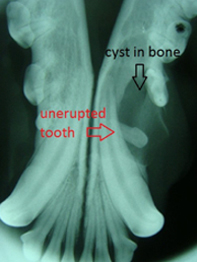
Dentigerous cysts form around unerupted teeth. It is not possible to diagnose these in the early stages without x-rays and, if left untreated, can result in the destruction of large areas of the jaw bone.
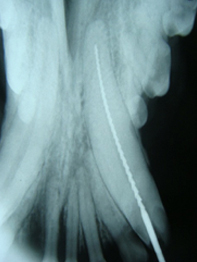
X-rays are essential when performing endodontic procedures, to ensure the instruments are reaching the end of the pulp canal.
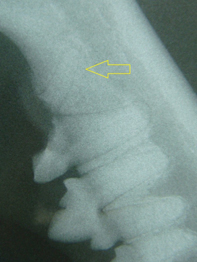
Part of the crown is missing from this cat’s tooth. Without x-ray, the broken root might have been left in which could cause ongoing problems.
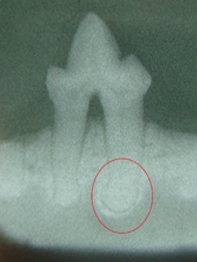
Abnormally shaped roots can make extractions more difficult. X-rays allow us to plan the extraction more effectively.
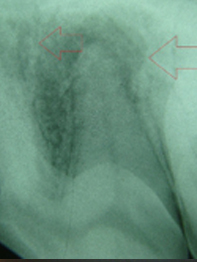
Radiography is required to identify areas of bone surrounding the tips of the roots, on this fractured, upper-carnassial tooth.
